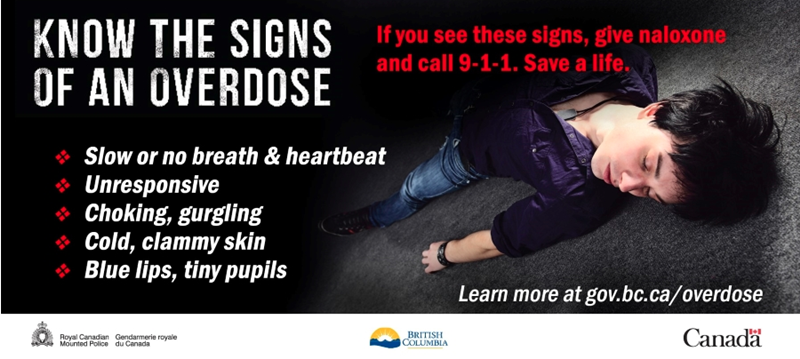
Interior Health’s Vernon storefront is preventing overdose deaths
Vernon city council has been briefed on Interior Health’s local response to the drug overdose death crisis.
The provincial coroner’s office reports that Vernon had 26 overdose deaths in 2020 and five to the end of February 2021.
Increased drug toxicity, primarily related to high concentrations of fentanyl and contamination of the drug supply with other substances, are both contributing factors to the spike in deaths.
 Know the signs of an overdose (photo credit: RCMP/Government of Canada/Province of B.C.)
Know the signs of an overdose (photo credit: RCMP/Government of Canada/Province of B.C.)


